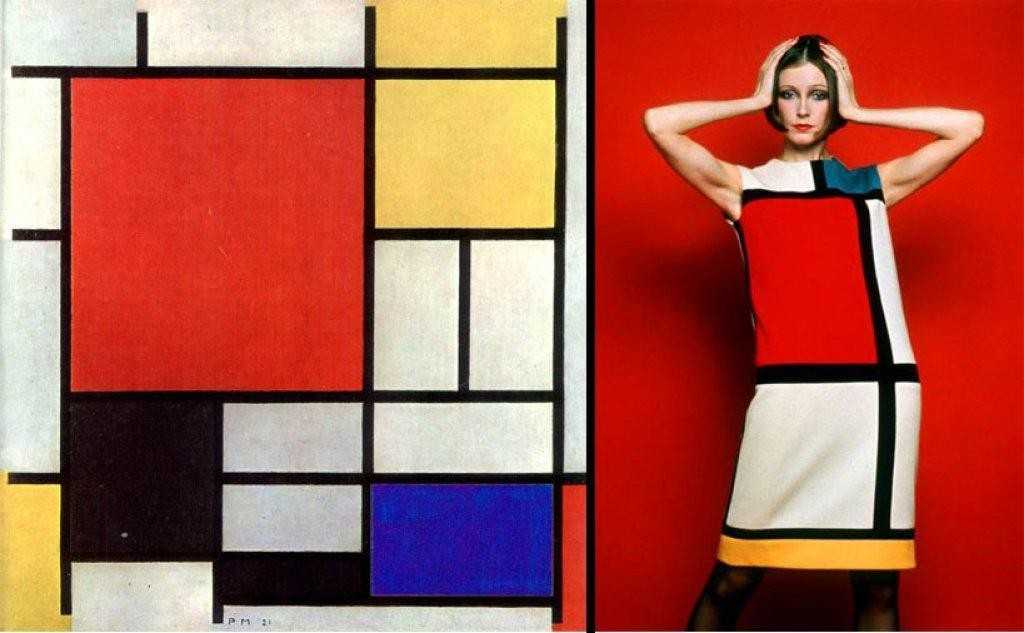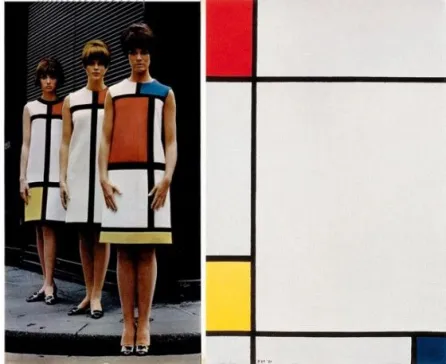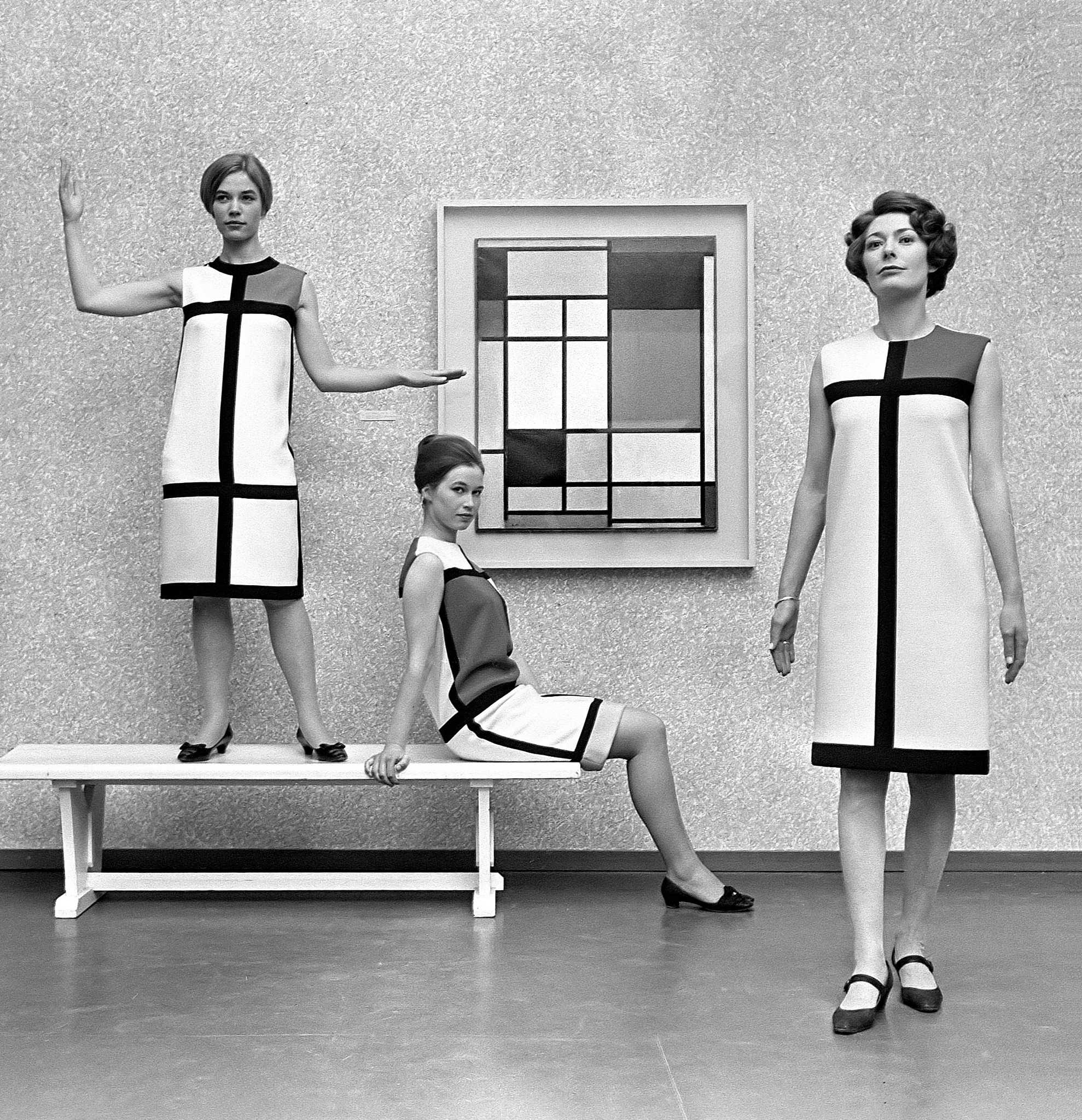In 1965, the fashion world was abuzz with excitement and anticipation as French fashion designer Yves Saint Laurent unveiled a revolutionary collection that would forever change the landscape of style and art. This groundbreaking collection featured a series of knit dresses inspired by the primary-colored “grid” paintings of Dutch artist Piet Mondrian. The collection was a bold and innovative blend of fashion and modern art, and it quickly caught the attention of both fashion enthusiasts and art connoisseurs.

The image captures three models posing in these iconic dresses, each designed with the distinctive black grid lines and bold blocks of primary colors—red, blue, yellow, and white—that characterized Mondrian’s work. The models stand and sit gracefully, their poses reflecting both elegance and modernity. Behind them hangs a painting by Mondrian, perfectly complementing the dresses and highlighting the seamless fusion of art and fashion.
Yves Saint Laurent’s vision was to bring the avant-garde art of Mondrian into the everyday world of fashion. He saw the potential to create something timeless and universal by translating the simplicity and boldness of Mondrian’s geometric compositions into wearable art. The dresses were a statement of the designer’s belief that fashion could be both innovative and accessible, and that art should not be confined to galleries and museums but should be part of everyday life.

When the collection was published on the cover of Vogue Paris, it was heralded as “the dress of tomorrow.” The public was captivated by the clean lines and striking color contrasts, which were a stark departure from the more ornate and traditional designs of the time. The dresses embodied a sense of modernity and progress, resonating with a generation that was eager for change and innovation.
The success of Saint Laurent’s Mondrian collection was immediate and far-reaching. It catapulted Mondrian’s somewhat obscure paintings into the mainstream of popular culture, bringing newfound recognition and appreciation for his work. The dresses became a symbol of the 1960s’ spirit of experimentation and boundary-pushing creativity, influencing not only fashion but also art, design, and popular culture.

As the models in the photograph stand confidently, they represent more than just fashion; they embody a cultural moment where art and fashion converged to create something truly revolutionary. Yves Saint Laurent’s vision and daring creativity paved the way for future collaborations between artists and designers, proving that fashion could be a powerful medium for artistic expression and cultural dialogue.
This iconic image serves as a reminder of the enduring impact of Yves Saint Laurent’s Mondrian collection, a testament to the power of creativity and the timeless appeal of art. It captures a moment in history when fashion and art merged to create a legacy that continues to inspire and influence to this day.
